02:51
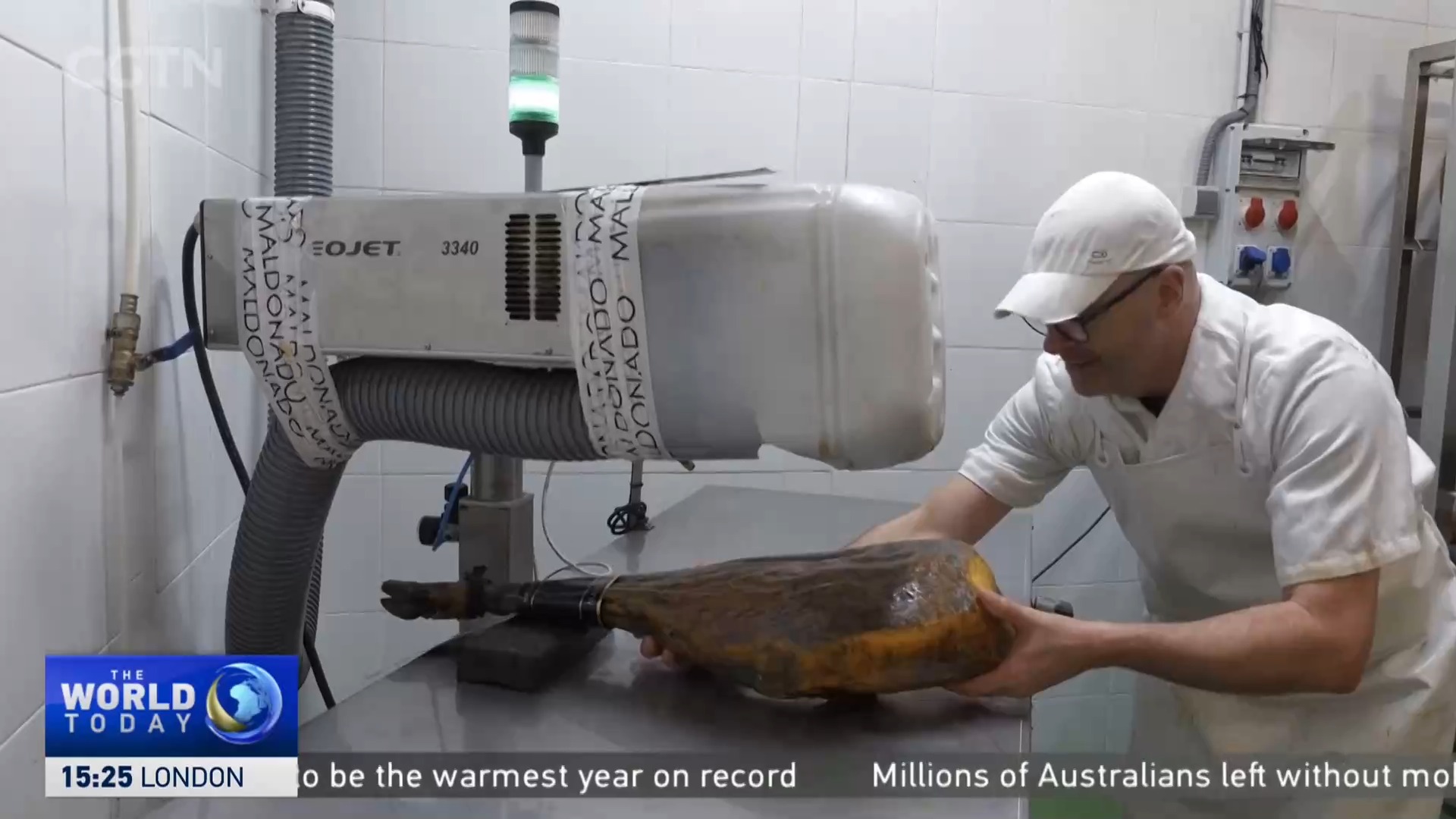
Black Iberian pigs roam freely through the 'Dehesas' or Mediterranean oak forests of Extremadura on Manuel Maldonado's farm.
The sun sparkles in the morning dew as the pigs hungrily scoff kilos of acorns freshly fallen from the aged oak trees.
It's a scene thousands of years in the making. Although the earliest known producers of Jamón Ibérico were located in the Candelario area of Salamanca province in the 15th century, the classic meat's traditions can be dated back far further back in time. Indeed, the tradition is thought to stretch back as far as cave paintings and the Celts.
An ancient rural rhythm, the acorn snuffling helps create the best Jamón Ibérico de Bellota (acorn-fed Iberian ham) on the planet.
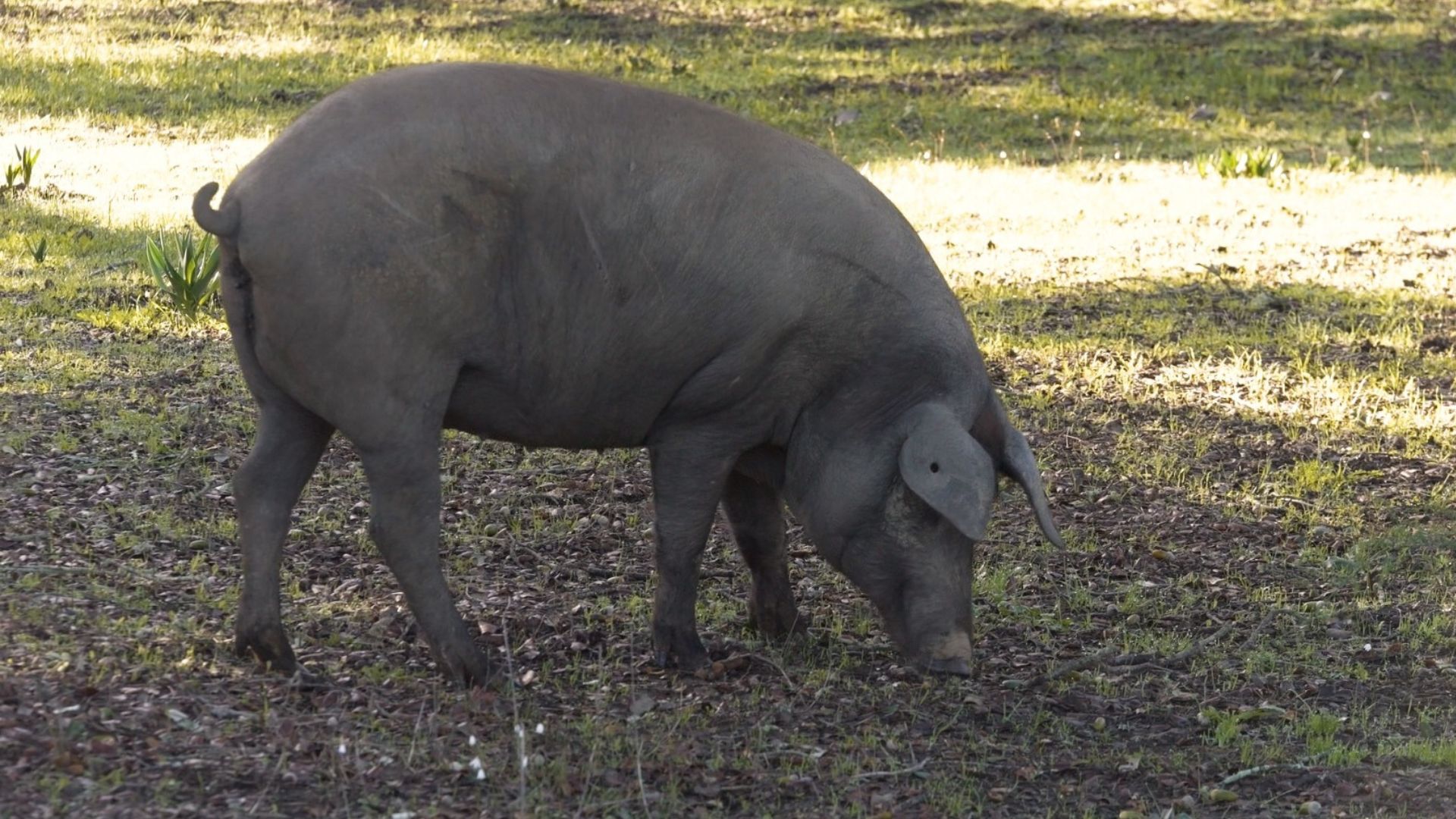
A lack Iberian pig snuffles acorns on Manuel Maldonado's farm. /Ken Browne/CGTN
A lack Iberian pig snuffles acorns on Manuel Maldonado's farm. /Ken Browne/CGTN
Manuel Maldonado is a producer of some of the finest Iberian ham there is, thanks to maintaining the old ways in his artisanal production.
"We have a singular ecosystem," he tells CGTN. "An ancestral animal and a culture of elaboration and consumption that dates back thousands of years – it's our way of life.
"All these circumstances create a truly unique product that's only possible in the south-east of the Iberian peninsula. Conditions that are simply impossible to recreate in any other part of the world."
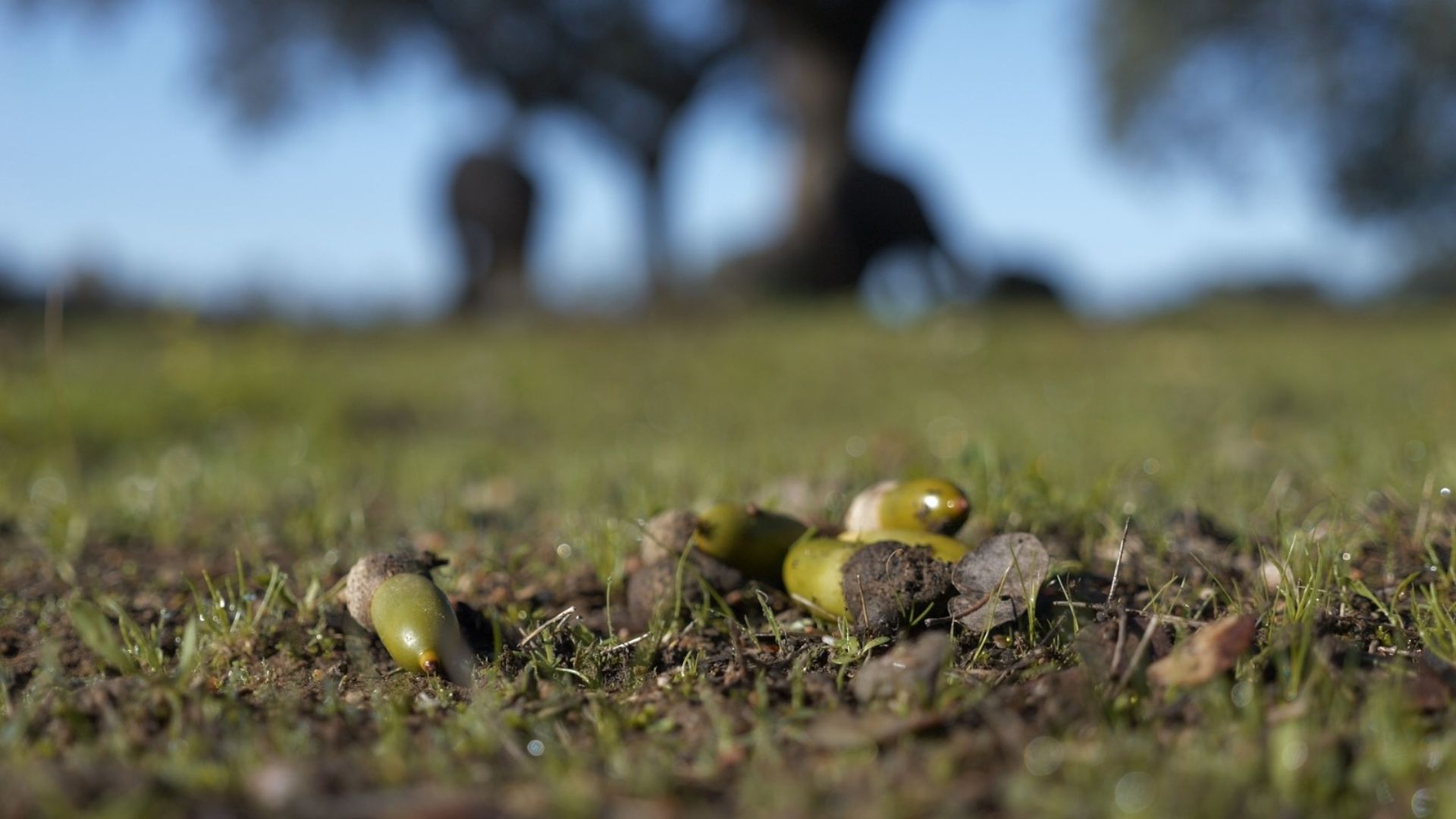
Fresh acorns ready for snuffling. /Ken Browne/CGTN
Fresh acorns ready for snuffling. /Ken Browne/CGTN
DNA-tested pigs
The pigs are even DNA-tested to assure their origin and purity.
During the montañera, or the fattening period which lasts from October to March, the pigs can eat up to ten kilos of acorns a day and put on a kilo of weight daily.
Their capacity to put on weight so rapidly and organically is also unique to this breed of pigs which are "sacrificed," as the Spanish say, at their fattest in around March. The meticulous curing process then begins.
First their cured legs are immersed in salt, which draws out the water, before they are left to dry and age for between four and five years. Complex, volatile molecules build up in the ham, reducing the fat, and leaving it ready to eventually be thinly sliced and devoured.
You're left with bellota ham – an exquisitely marbled meat full of flavour and natural antioxidants. It's enjoyed from Spanish breakfast tables to wedding feasts nationwide…and it's now a Chinese fascination too. The product is being showcased at the 2023 China International Import Expo (CIIE) in Shanghai.
Maldonado told CGTN he can't decide if it's of a greater economic or ambassadorial value to Spain. Many will tell you that Iberian ham is more Spanish than the world-renowned paella dish, and Maldonado says the margin for further growth is enormous. "We haven't even reached 20 percent of achievable exports, we have another 80 percent left to grow," he said.
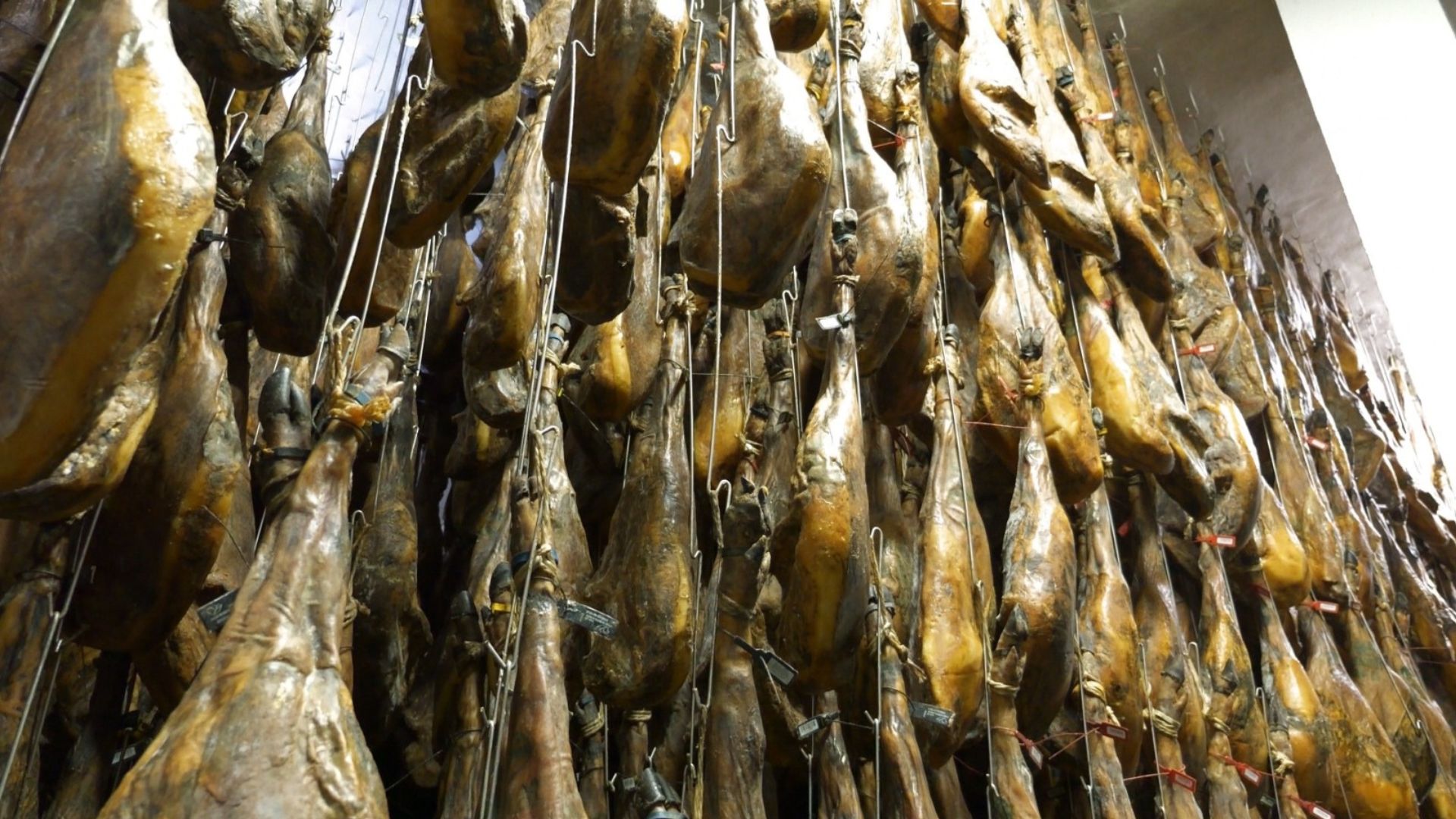
The curing process for Iberian ham can take up to five years. /Ken Browne/CGTN
The curing process for Iberian ham can take up to five years. /Ken Browne/CGTN
READ MORE
Switzerland lifts restrictions on gay men giving blood
Red panda cubs born at British Zoo
Cantona moves into music
Spain and China have much in common, particularly when it comes to eating, drinking, and cooking. Endless hours spent sitting around the table enjoying good food is a central pillar of both cultures.
When Chinese President Xi Jinping visited Spain in 2018 regulations were loosened and ham on the bone was sanctioned for export to China. That was a game-changer.
Suddenly Spain could export the entire leg and have professional cutters at events slicing the ham paper-thin – the best way to eat it. It's a skill that you can attain in an entire university degree in Spain.
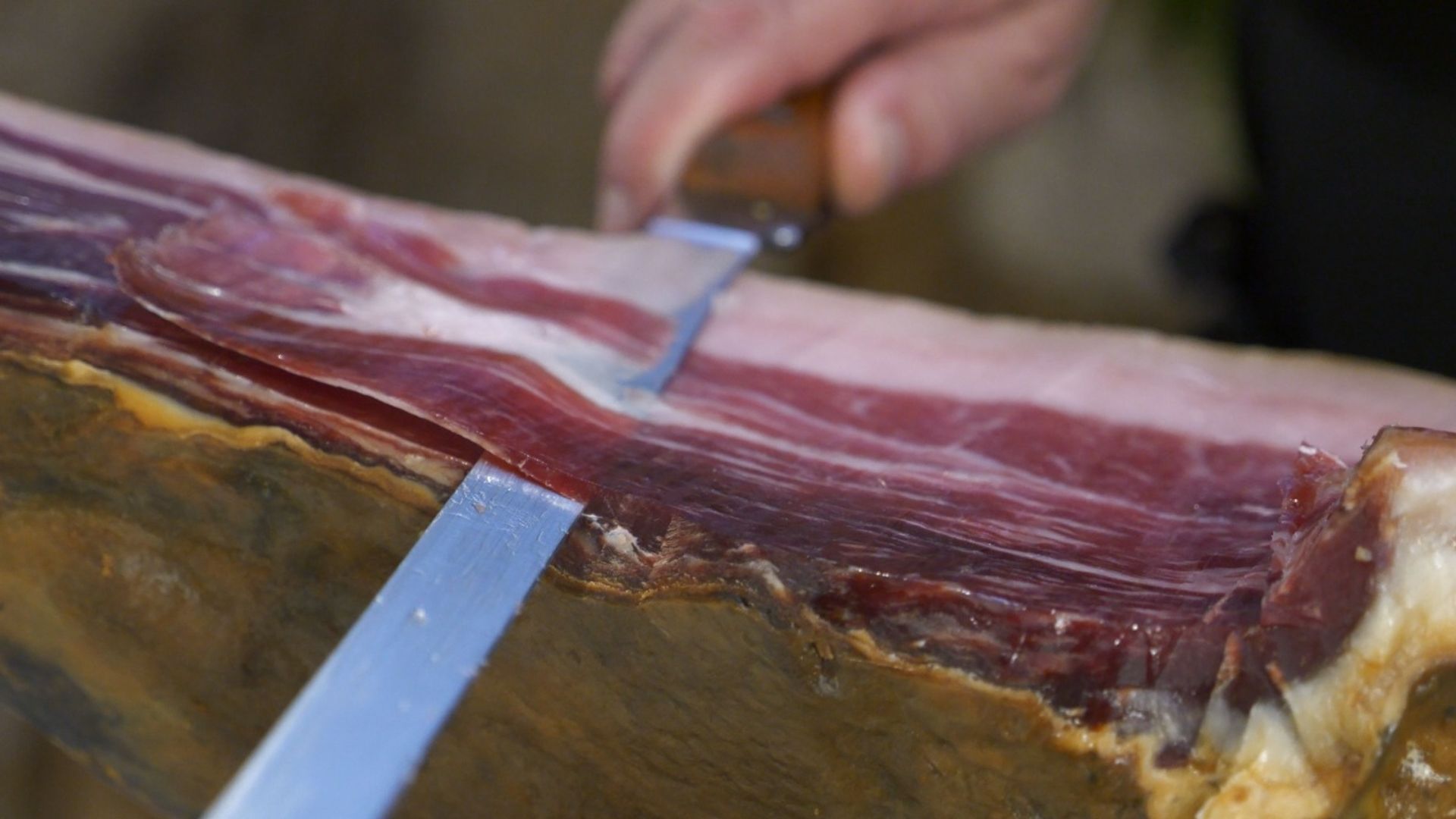
The meat is best enjoyed in wafer-thin slices. /Ken Browne/CGTN
The meat is best enjoyed in wafer-thin slices. /Ken Browne/CGTN
A professional ham-cutter working on a 'jamonero' – or holder – and special cutting knives at Spain-related events became a central Chinese attraction, surrounded by intrigued locals recording videos on their phones and posting them on China's social media giant channels like Douyin and Weibo. Paired with some fine Spanish wine, the elegance of the product placed it in the fashionable, luxury sector and a trend was born.
China is now the second largest importer of Spanish ham outside the European Union, spending over $30 million on this luxury product every year. That's a 900 percent increase since 2016, making it one of the fastest growing markets for this Spanish delicacy. Maldonado ham will be on display at the CIIE in Shanghai over the next few days, a totemic symbol of Spanish cuisine not to be missed.
Subscribe to Storyboard: A weekly newsletter bringing you the best of CGTN every Friday